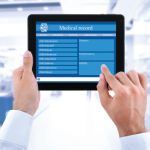Most current efforts at improving clinical communication in the EHR have focused on varying methods of input by the clinician. A new way of thinking might be to focus on different presentations of the clinical record based on the viewer’s function. The same medical record might have a very different view of the record for a billing or administrative role than it might for a clinician role. In this manner, comprehensive information would be available in the EHR, but increasingly there would be different views of the aggregate information based on the function of the reader. This could go a long way toward removing the extraneous information that is such a burden to all.
Moving from SOAP notes to APSO notes, in which the clinical summary appears at the beginning rather than the end, could provide more rapid assimilation of information by subsequent clinicians. This also might lead to greater functionality in both inpatient and ambulatory settings, by providing more information that is germane to the setting at hand. The complexities of the acute care setting with its reliance on frequent data access have little relevance to subsequent care in the ambulatory setting. There needs to be better focus on the workflow of clinicians. Where is the information required to make clinical decisions, and how can it be more meaningfully presented?
There is a compelling need for the more intuitive presentation of clinical information, particularly laboratory, radiographic and pathologic information. At the very least, there should be the capacity for rapid distinction of significant abnormal results from repetitive normal results. How many normal mammogram reports should be viewed to find the one that is abnormal? Superior search capabilities to identify abnormal results would seem to be a real opportunity.
The Bottom Line
EHRs have enhanced many aspects of clinical documentation, including rapid dissemination, distribution and engagement by multiple providers, as well as patient engagement in portions of the clinical record, enhanced billing documentation, and a potential capacity to enhance overall efficiency of documentation. But in recent years, the EHR has moved from a narrative, which served the needs of patients and clinicians to have a longitudinal record of the patient’s care, to a document that is primarily designed to serve administrative needs. Many clinicians now find it difficult if not impossible to go to the EHR and to answer the crucial questions regarding what is the patient’s problem and what is planned to address this problem. And that must remain the most important function of any record of a patient’s care.

